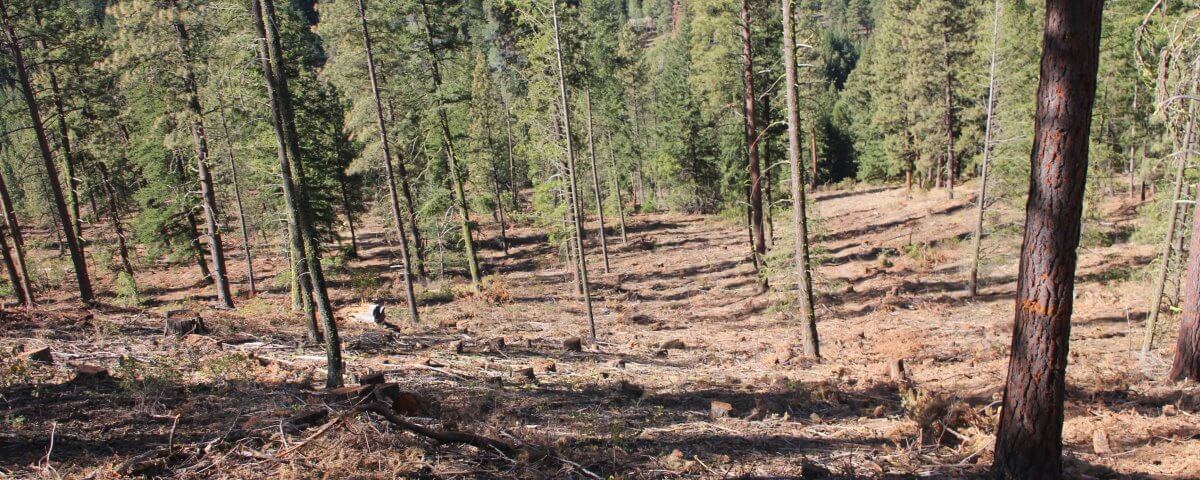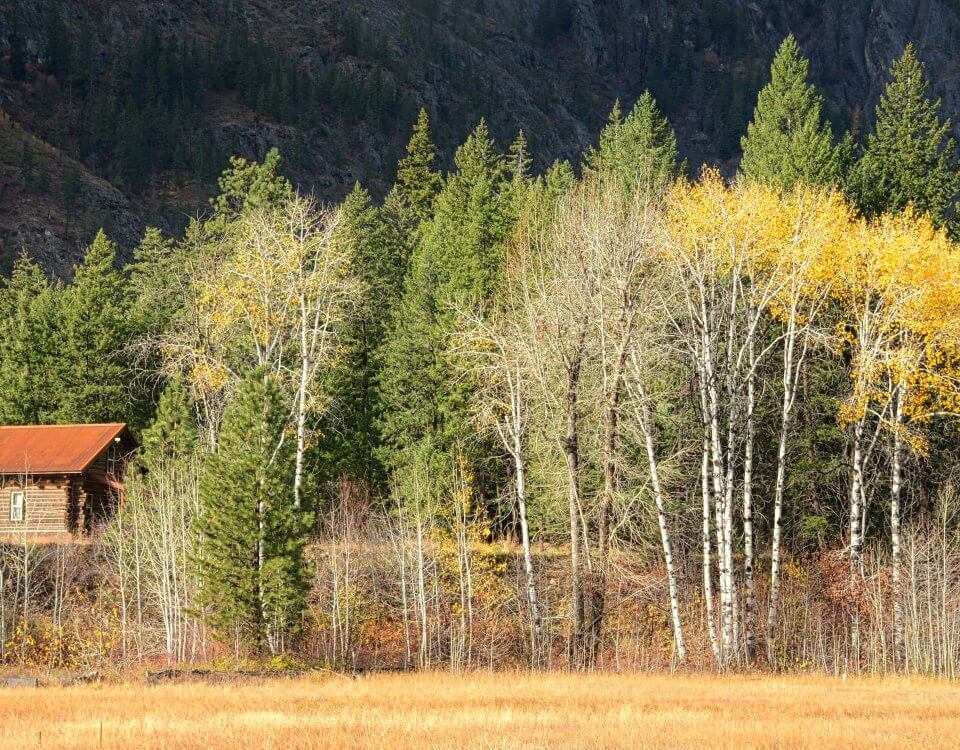Some doubts, some optimism: A member’s takeaways from Forest Service field tours

Shifting the Paradigm: From Timber Harvest to Restoration
September 25, 2023
MVCC Receives EPA Environmental Justice Grant
November 30, 2023By Dwight Filer
I was able to attend two of the three Field Tours the Forest Service held recently: the Sept. 30 tour addressing “Designation by Prescription” (DxP), and the Oct. 7 tour covering Condition-Based Management (CBM). I went into these field trips with my own impressions of the work that had already been done on the Mission project. I came away from the field tours with some new perspectives.
The first tour was an explanation of what goes into the DxP model and how forest managers write the prescriptions for units on the ground. There is good reason to be skeptical of this model, knowing the outsized influence that the timber industry has had on the management of our National Forests in the past, and how favorable the implementation of DxP on the Mission Project appears to be for that same timber industry. The Forest Service has a less than stellar history of forest management: all thru the 50’s, 60’s, and 70’s they were harvesting more timber than was being grown (overcutting), and literally liquidating the old growth forests in the coast ranges of Oregon, Washington and elsewhere. Clearcutting was the preferred method of many timber sales on Forest Service lands during that era. The Forest Service must build back trust among those of us who lived through that period. Nobody today can be blamed for the poor forestry practices of the past, but it is fair to expect the Forest Service to manage our forest resources in a more thoughtful way today.
I graduated from Oregon State University with a B.S. in Forest Management in 1979. It took me a few years out of college to fully grasp the extent to which my education had been geared to the commercial side of forestry–“getting the cut out”. At that time, the University forestry schools were a conduit into the timber industry, in one form or another. Very little ecosystem management was being taught. Whether graduates ended up at the Forest Service or Weyerhaeuser, the mission was similar. It is only fair to the Forest Service to point out a pertinent fact: Congress had mandated that our National Forests be managed for timber production, to create jobs, support rural economies, etc. And again, our appetite for natural resources was growing. The logical outcome was cutting our timber like there was no tomorrow, and we did.
Matt Dahlgreen, a retired Forest Service Silviculturist, brought up a point on Oct. 7 that is important to consider: the fact that there are many jobs in the timber industry, with many people making their livings providing a needed service, in a culture that seemingly has a voracious appetite for natural resources. How many MVCC members have built a home or have friends who have? When the lumber was delivered to our building site in 2005, I knew exactly where that lumber came from. I have a good friend who was a pre-sale forester/timber administrator for the Forest Service, a real professional that I have immense respect for. He has influenced the way I think about forestry and timber management issues. He freely talks about his frustrations with certain factions of the environmental community that appealed every single timber sale posted by the Forest Service. I believe the Citizen’s Council has struck a nice balance between environmental advocacy and common sense—the Mission project was supported by MVCC in its original version. Only after it was changed from a marked timber sale to the DxP model, and the implementation on the ground became visible, did MVCC raise some legitimate concerns.
The DxP model has revealed its flaws in the Mission sale. In DxP, the logging contractor is given the responsibility of selecting the trees to be cut, based on the Forest Service’s prescription. Trees per acre left standing, and the spatial patterns of those trees, became problematic issues identified by citizens who have walked the commercial units on the Mission Project and seen first-hand the results of the logging. In simple words, the forest environment left behind after logging on the Mission project simply doesn’t resemble my vision of a “restored forest”. Where are the clumps of trees that give cover to wildlife? Where is the “diverse composition, structure, and function—key elements of healthy and productive ecosystems” called for in the Restoration Strategy? The Mission project resembles a commercial thinning project of 5 decades ago more than the vision of forest restoration laid out in its own documents.
One of the management techniques the Forest Service uses in logging/thinning treatments is called ICO, “Individuals, Clumps, and Openings”. The idea is to leave some individual trees by themselves, and some trees in clumps, rather than the traditional uniform spacing of individual trees in a thinned stand of timber. The ICO technique is intended to leave a more natural looking (and more functional) forest. The spatial patterns of trees left standing on Mission show glaring flaws in implementation that can be improved upon. The end result looks like a designed fire break but doesn’t align with the language in the Restoration Strategy. If I read the tea leaves correctly, we can expect the Forest Service to make positive changes in their implementation of the ICO model (based on comments made by the Silviculturist). The combination of a relatively paltry number of trees left per acre, and the poor implementation of “ICO”, leaves us scratching our heads—why is the Methow Valley Ranger District not following their own EIS and Restoration Strategy?
The field tour on Oct. 7th was to give the public a short course on Condition Based Management. A thorough article explaining the U.S. Forest Service’s use of CBM by the American Bar Association is worth reading .The article gives a good explanation of what CBM is and how it is used, and its weaknesses. (For balance, the Forest Service has its own definition and explanation of CBM, from a positive point of view) I don’t want to go into an explanation of CBM- I recommend reading the above articles for a better understanding. The Forest Service will tell you CBM gives them more flexibility to better manage the National Forest: The American Bar Association sees the weaknesses as a way for the Forest Service to skirt the requirements of the more restrictive NEPA process. My forester friend would say there are two sides to this coin- and that environmental groups totally opposed to logging can easily abuse the traditional NEPA process, which gives the Forest Service much less flexibility than the CBM model. This is where the Forest Service’s less than stellar history of managing our National Forests comes full circle: with overcutting and the indiscriminate clearcutting in their past, how do people who care deeply about their local National Forest Lands trust an organization with such a poor track record? And how do we have our voices heard on these local “Forest Restoration” projects that use the CBM/DxP models if implementation isn’t up to the standards of the EIS?
The Okanogan-Wenatchee National Forest has a comprehensive, science-based restoration strategy that the local district is following in planning the Mission, Twisp, and Midnight projects. However, one of the lasting impressions I came away with after these two field tours is that the local district isn’t clear on how they are interpreting the “Forest Restoration Strategy” as a baseline for implementation. Our local Forest Service employees are good people working in a tremendously challenging environment, with many unknowns looming in the future. The Forest Collaborative was created to help them move forward with buy-in from all interested parties. MVCC is a member of the Collaborative, and our concerns are legitimate. The language in the “Dry Forest Strategy” calls for a “management approach that will be adaptive and experimental—learn from mistakes and repeat successes”. This policy direction is where input from citizens and the MVCC can have a positive effect. Pointing out where improvements can be made in implementation should be welcomed by the Forest Service–again, language from the Forest Restoration Strategy, calling for a “commitment to adaptability and accountability”. I left the field tour on Sept. 30 with a very cautious amount of optimism that the Forest Service will actually address the concerns of citizens like me. And after the field tour on Oct. 7, I came away having doubts. I’ll be commenting on the upcoming Midnight project–maybe our best shot at having influence going forward, because now the Forest Service knows it has an engaged community.


